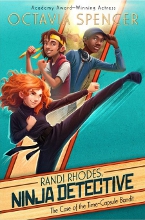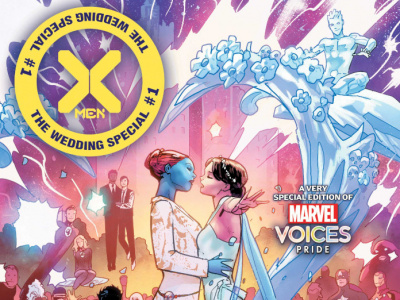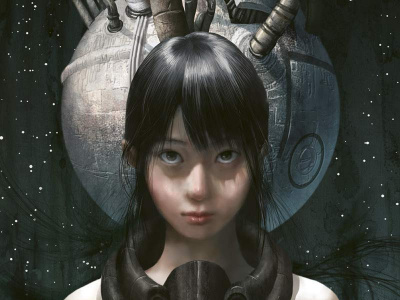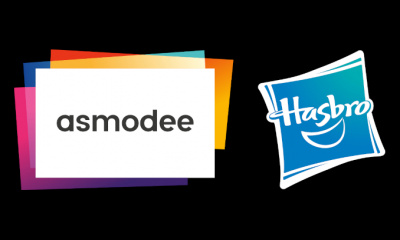
Confessions of a Comic Book Guy is a weekly column by Steve Bennett of Super-Fly Comics and Games in Yellow Springs, Ohio. This week, Bennett looks at the new Teen Titans cover controversy.
We all want more people to read more comic books, or at least we say that we do. And I know retailers want more people to buy their comic books, but those well-intentioned sentiments are sometimes sabotaged by our own attitudes and actions. And you sure couldn’t tell that from some of the actual comics…
In case you missed it, former DC Comics associate editor Janelle Asselin wrote a piece called "Anatomy of a Bad Cover: DC's New 'Teen Titans'" that appeared on the Comic Book Resources site. Among other things she called out the cover by artist Kenneth Rocafort for Teen Titans #1, a comic coming out in July, for its inappropriate sexual imagery. And for her trouble she got name called, harassed and even threatened with rape. While the story hasn't yet broken out into the mainstream media, it has gotten its share of attention in our little corner of the interweb, my favorite being in an article that appeared on Boing Boing titled "Can you figure out what's wrong with this picture of a half-naked 16 year-old girl with breasts implants the size of her head?" by Rob Beschizza. Though funny as hell, I feel compelled to point out the title is a bit hyperbolic, seeing as how Wonder Girl is far from "half naked." But before I continue with my own comments on it, I would like you to go read Asselin's piece for yourselves. I'm serious. It's OK, I'll wait.
I did that because what seems to have gotten lost in all of the reaction to her article was what she said in the actual article. Because she does a lot more than just reveal some hard home truths about a comic book cover, she also zeroes in on the other thing wrong with this version of the Titans. Along with being seemingly engineered to appeal to the 18-39 males, the demographic, which in Asselin's words "virtually all of DC's 'New 52' appears to be aimed at,"* it might as well have been crafted for the express purpose of repelling female readers. Which is strange, seeing as how teen team comics like Young Justice, Young Avengers, New Warriors (and, once upon a dream, New X-Men and New Mutants), etc. have traditionally appealed to a younger and more diverse (when it comes to race, gender and ethnicity) readership.
And while I know that it's not about comics I think you'll find some striking similarities to comics' lack of diversity in a piece by Nina Terrero about the lack of racial representation in children's literature that which ran in the April 11th issue of Entertainment Weekly. If the title "Kid Lit's Primary Color: White" wasn't enough of an indicator of what it's about the bullet point of the author's argument gets front-loaded in italics. Of 3,200 children's books published last year, only 93 featured black characters--and the numbers weren't great for Asians, American Indians, and Latinos either. What gives?
The principal answer to that question comes in a quote from Afro-Latina author Veronica Chambers who says it's primarily due to the "it is what it is" mentality of twenty something white editors who "…really don't care." Which is demonstrated in a quote from an unnamed children's book executive who said "If we thought there was a demand for more nonwhite characters, we would try to fill it." A shortsighted (and strangely familiar) mentality that no doubt will soon backfire on the publishing industry, given that by 2019 children of color will outnumber white ones.
And I was particularly taken with a quote from novelist Jennifer Weiner about why it's so important for books to appeal to a diverse readership; "Books often give us our first glimpse of how other people experience the world. How do we expect white kids to understand the lives of Asian, Latino, African and Indian kids if everything they read is about kids who look and sound like them? The way things now stand now, this is a lose-lose situation for everyone."
* You might have noticed that I haven't written much about DC Comics lately. Well, that's only because I can't bring myself to read a whole lotta DC Comics these days (and I doubt a lot of you feel Scooby Doo Team-Up "counts"). Believe me, it's not because they're no longer "my" DC anymore, that non-threatening and reassuring home to oversized prop pennies and square-jawed heroes who delivered bags of toys to orphans at Christmas. No, it's because most of them absolutely stink of desperation; they want so badly to be "hard" and "edgy," but most often the results are sour, false and cheap. DC Comics is in danger of becoming the literary equivalent of Axe Body Spray.
The opinions expressed in this column are solely those of the writer, and do not necessarily reflect the views of the editorial staff of ICv2.com.








